This special release presents data on marriages obtained from the timely and late registered marriages at the Office of the City/Municipal Civil Registrars and submitted to the Office of the Civil Registrar General through the Philippine Statistics Authority - Provincial Statistical Offices (PSA - PSOs). Information presented includes registered marriages that occurred from January to December 2020 (cut-off date is as of 16 July 2021 on the submission of encoded data files to the PSA-Central Office from PSOs). Figures presented herein are not adjusted for under registration.
Lowest number of marriages registered in 2020 over the past ten years
Registered marriages in NCR reached 32,689 in 2020. This number is significantly lower by 39.0 percent compared to the registered marriages in 2019 at 53,696. The decrease is the biggest percent change of registered marriages in the region from 2011. (Figures 1 and 2)
Figure 1. Number of Registered Marriages, NCR: 2011 – 2020
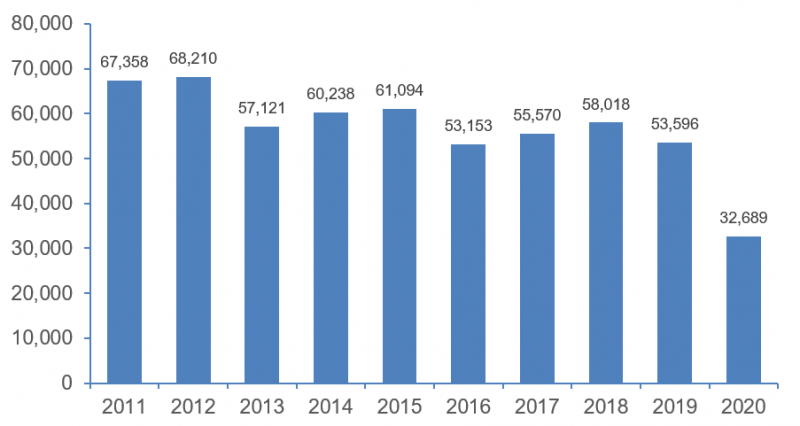
Figure 2. Percent Change of Registered Marriages, NCR: 2011 - 2020

Six out of ten marriages occurred in three cities of NCR
Cities with the highest number of recorded marriages in 2020 were Quezon City (9,420 or 28.8%), City of Manila (6,070 or 18.6%), and City of Caloocan (4,165 or 12.7%). The number of registered marriages from these cities comprised 60.1 percent of the total registered marriages in NCR. On the other hand, the cities/municipality with lowest registered marriages were Pateros (142), City of Navotas (206), and City of San Juan (277). (Figure 3)
Figure 3. Number of Registered Marriages by City/Municipality of Place of Occurrence, NCR: 2019 and 2020
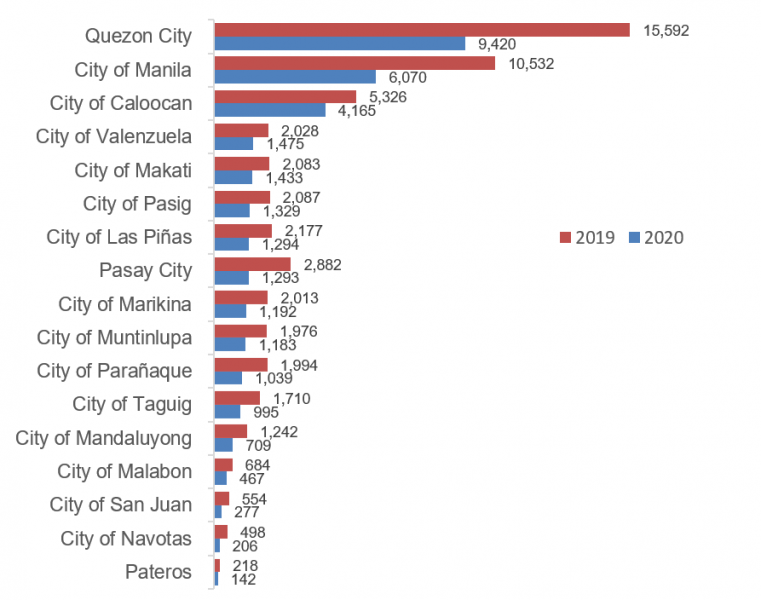
Most number of marriages occurred in February
In 2020, registered marriages occurred the most in February with 5,791 followed by December with 5,540. On the other hand, the month of April and May has the least occurrence of marriages with 69 and 297, respectively.
In terms of daily average, February recorded the highest with an average of 200 marriages per day. Conversely, the month of April had the lowest daily average of two marriages per day. (Figure 4)
Figure 4. Number and Daily Average of Registered Marriages by Month of Occurrence,NCR: 2020
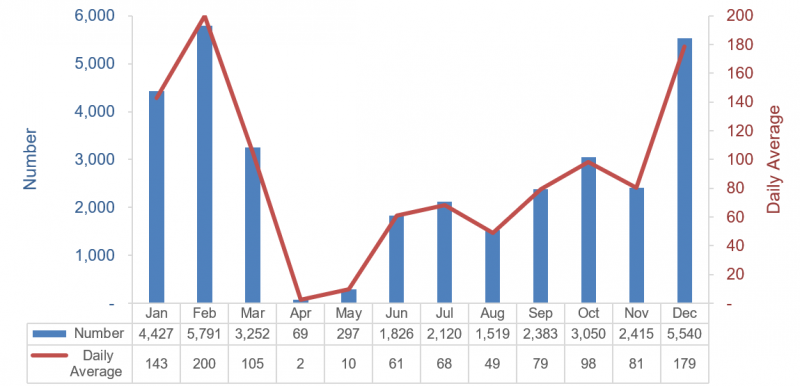
Nine out of ten marriages were registered on time
In 2020, 92.8 percent of marriages in NCR were registered on time while 7.2 percent or 2,340 were registered late. Cities/municipality with the highest number of timely registered marriages were City of Valenzuela (99.3%), Pateros (99.3%), and City of Manila (99.2%). Conversely, City of Caloocan reported the most number of late registered marriages with 1,384 or about 59.1 percent of the total late registered marriages in NCR. (Figure 5)
Figure 5. Percent Distribution of Registered Marriages by Registration Status and by City/Municipality, NCR: 2020

Women married younger than men
The median age of marriage, or the age at which half of the population were younger/older upon marriage, was 29 years old for women and 30 years old for men in NCR in 2020.
Figure 6 shows the age-sex structure of registered marriages in NCR in 2020. It shows that more women (58.4%) than men (45.4%) married in age groups between 15 to 29 years old.
Figure 6. Percent Distribution of Registered Marriages by Age Group and by Sex, NCR: 2020

Most marriages between Filipinos and non-Filipinos involved American, Chinese, and Indian nationals
There were 30,790 marriages (94.2%) between Filipino men and women, while 1,789 marriages (5.5%) were between Filipinos and foreign nationals. Among intermarriages with foreign nationals, a total of 1,675 Filipino women (93.6%) married non-Filipino men, while 114 (6.4%) Filipino men married women of foreign nationals.
Intermarriages between Filipinos and American nationals registered the highest number with 244 or 13.6 percent of the total. This was followed by marriages involving Filipinos and Chinese nationals with 240 or 13.4 percent. Other nationalities of men and women who were married to Filipinos were Indians (225 or 12.6%), Japanese (178 or 9.9%), and Korean (99 or 5.5%). (Figure 7)
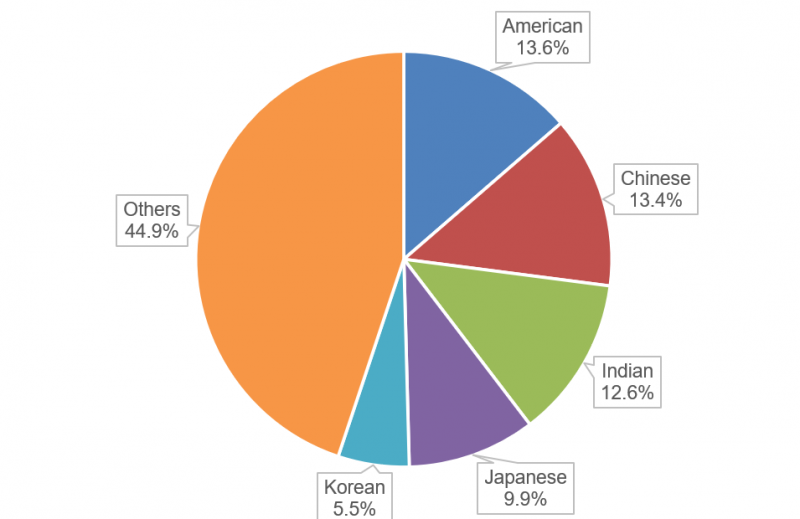
Four out of ten marriages contracted through a civil ceremony
About four out of ten (43.1%) registered marriages in 2020 were contracted through civil ceremony while 16.6 percent were officiated in in Roman Catholic Church. Marriages solemnized in Muslim traditions comprised 0.9 percent of the total while while the remaining 39.5 percent were performed in other religious rites. (Figure 8)
Figure 8. Percent Distribution of Registered Marriages by Type of Ceremony, NCR: 2020
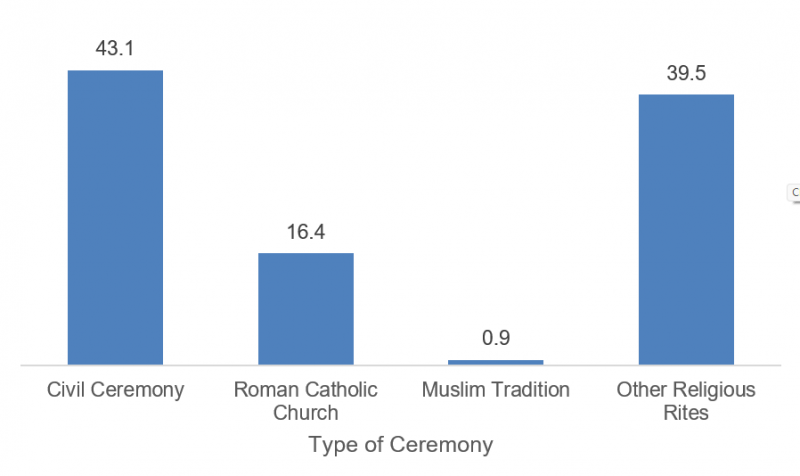
PACIANO B. DIZON
Regional Director
Technical Notes
Vital statistics are derived from information obtained at the time when the occurrences of vital events and their characteristics are inscribed in a civil register.
Vital acts and events are the births, deaths, fetal deaths, marriages, and all such events that have something to do with an individual's entrance and departure from life together with the changes in civil status that may occur to a person during his lifetime. Recording of these events in the civil register is known as vital or civil registration and the resulting documents are called vital records.
Marriage is a contract of permanent union between a man and a woman entered into in accordance with law for the establishment of conjugal and family life.
Place of Occurrence refers to the place where the vital event took place.
Period when to report the event
Marriages that require the issuance of marriages license shall be reported to C/MCR for registration not later than fifteen (15) days from date of marriage. However, marriages that do not require a license such as marriage at the point of death (Article 27); marriages in remote places (Article 28); marriages between members of ethnic cultural community (Article 33); and marriages between men and women who have lived together for at least five (5) years (Article 34), shall be reported not later than thirty (30) day after date of marriage.
Any report made to the LCROs beyond the reglementary period are considered late and can be entered only in the civil register after the informant complies with the requirements for delayed registration.
